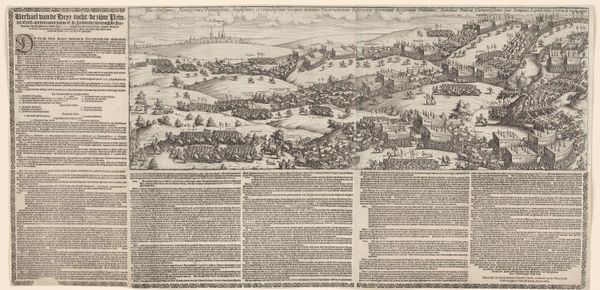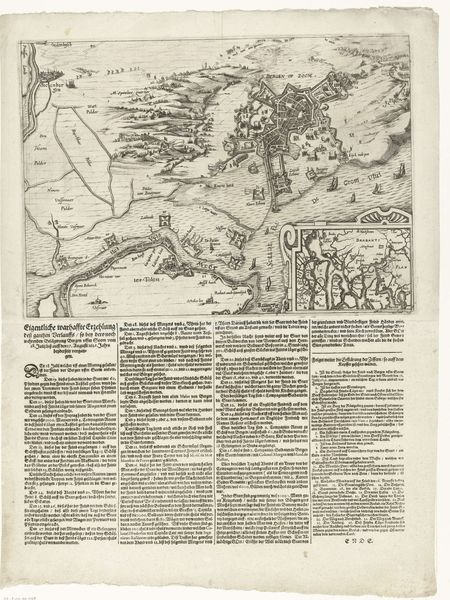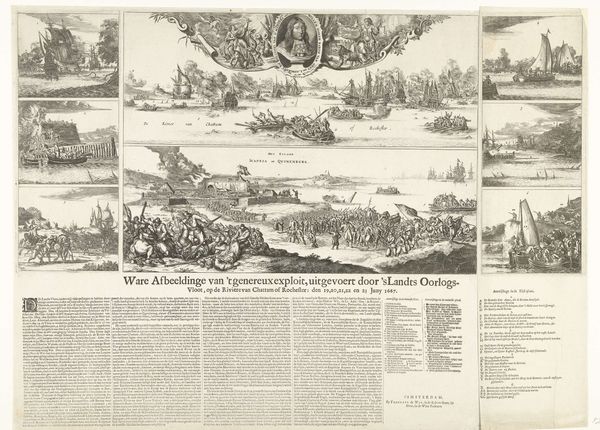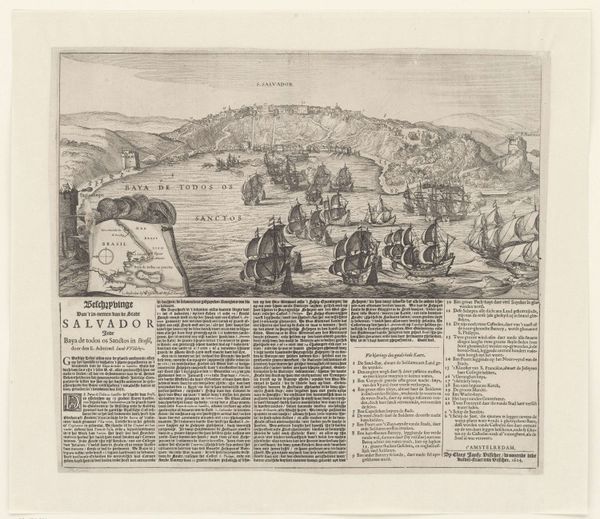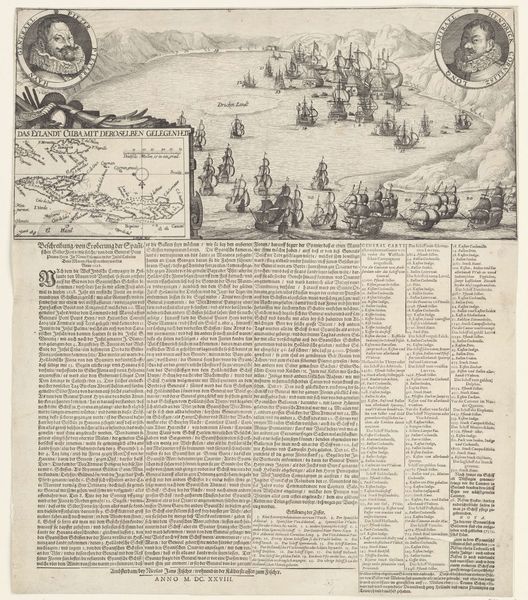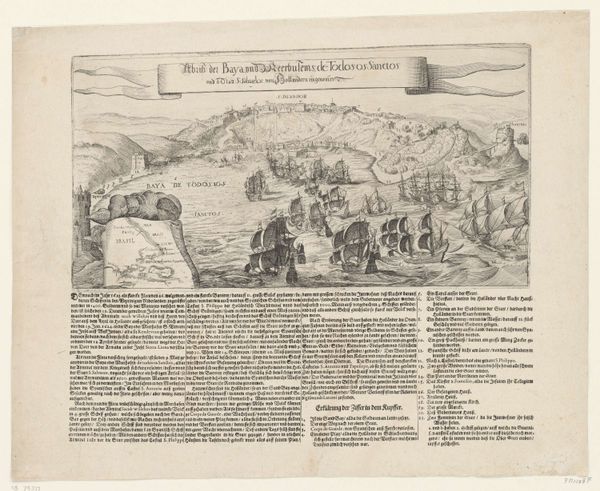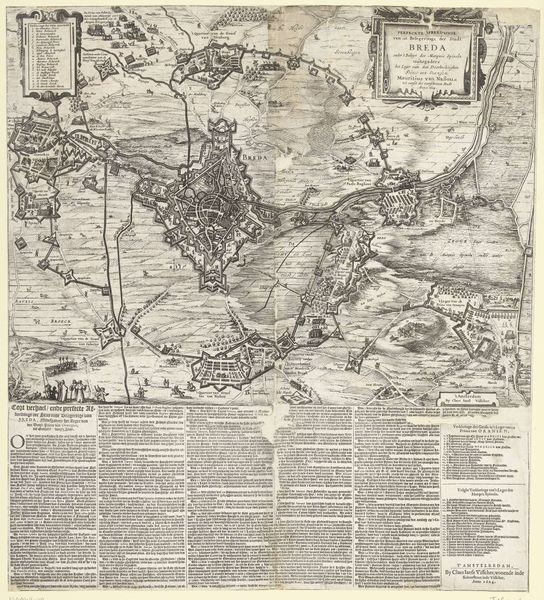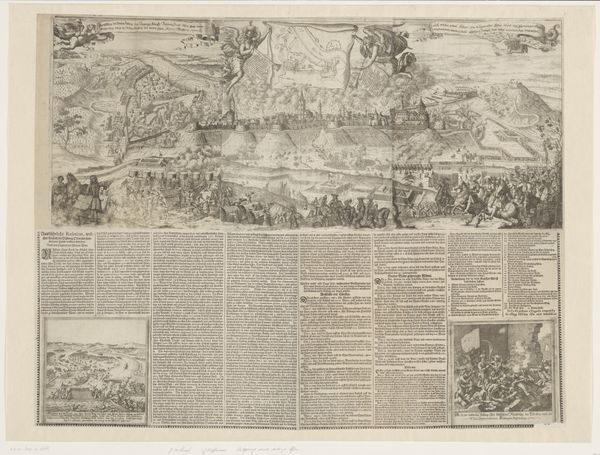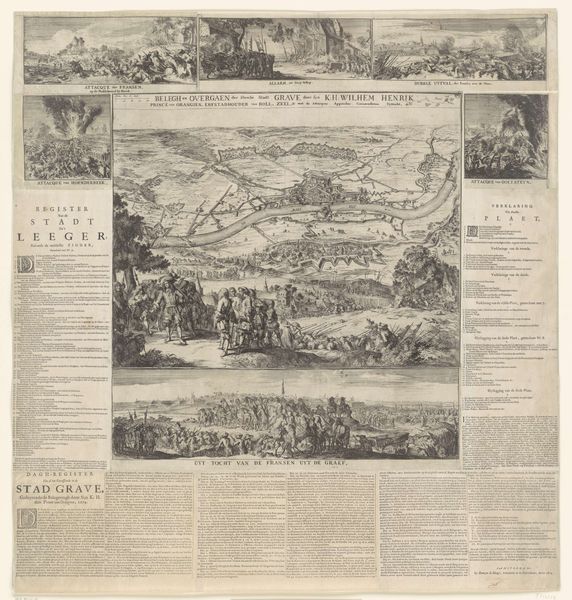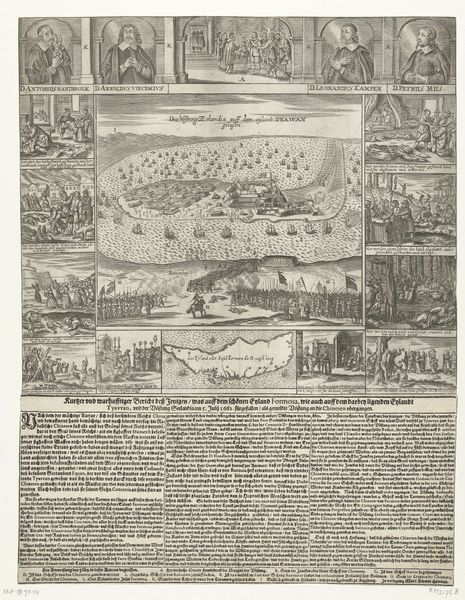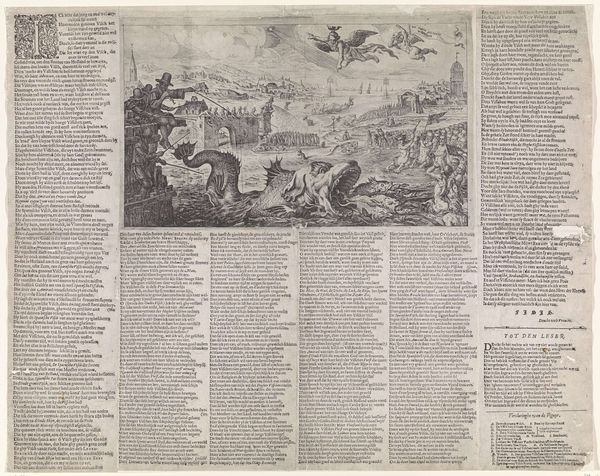
print, engraving
#
aged paper
#
baroque
# print
#
old engraving style
#
hand drawn type
#
landscape
#
personal sketchbook
#
cityscape
#
history-painting
#
engraving
Dimensions: height 418 mm, width 432 mm
Copyright: Rijks Museum: Open Domain
Curator: What a wonderfully detailed print! This is Salomon Savery's "Slag bij Rocroi, 1643," created in, unsurprisingly, 1643. It depicts the Battle of Rocroi and is currently held at the Rijksmuseum. It’s a stunning example of baroque engraving. What's your immediate take? Editor: My eyes are immediately drawn to the incredible density of imagery, it feels very immediate, overwhelming even. There is a remarkable dynamism of forms and textures crammed together across what appears to be a landscape. It reminds me of the symbolic landscapes often featured in early alchemical manuscripts where every figure represents some greater process at hand. Curator: That's a very insightful comparison. It's worth noting that depictions like this served multiple purposes. Yes, there was the factual recording of a battle, but they also served as powerful political tools, reinforcing national identity and bolstering the prestige of military leaders. Images of battle shaped public perception in ways we might compare to modern media coverage of conflict. Editor: Indeed, consider how certain iconographies of power and virtue are interwoven throughout depictions of leaders even in chaotic war scenes, take those horseback riders towards the bottom of the print. Do we know whose army Savery was aligned with or commissioned by? Because those symbols often hint to particular ideologies at hand within the cultural context it was made. Curator: Savery's allegiance, or rather the commission, speaks to a very complex and fluid political landscape. The battle was a pivotal moment in the Thirty Years' War. By the looks of it the piece celebrates the French victory, depicting the Spanish forces in disarray. The iconography likely serves the victor’s narrative, showcasing French military might as a stabilizing force for political control. Editor: And those landscape elements! Look how Ardennes seems more than just geographical feature but almost a symbolic theatre where human drama unfolds—like in Renaissance tapestries or allegorical paintings where the landscape often functions as an emotive and psychological reflection of the story. Curator: Exactly! The print is an intriguing blend of what we consider a 'history-painting', but at the time also had all the markers of a propaganda tool, doesn't it? Editor: Absolutely, reflecting how even documentary depictions can be layered with symbolic intentions, transforming facts into vehicles of national mythology. A stark reminder that how we choose to see becomes its own history.
Comments
No comments
Be the first to comment and join the conversation on the ultimate creative platform.
